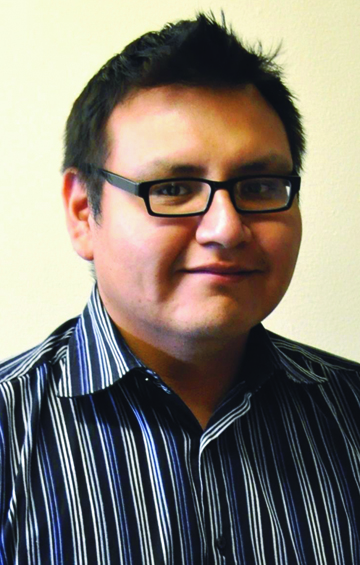 In the Lakota culture, there is a
In the Lakota culture, there is a
position that I’ve always found fascinating. It’s called eyapaha.
Traditionally, the eyapaha was effectively the spokesman for every
tiospaye (extended family), and encampment in our nation. The eyapaha
shared the decisions our councils made and fostered discussion where
it was needed with information not everyone may have known. In
essence, the eyapaha was analogous to our modern-day journalist.
It’s often my wont to tell anyone who
asks that I am not an elitist journalist … but I was educated by
elitist journalists. When I attended the American Indian Journalism
Institute and continued to study journalism at the University of
South Dakota, the term “gatekeeper” was still bounced around with
pride and zeal. We were being educated on how to find a story,
getting others to tell the story and making sure the story was fair
to all parties involved. Then came the real world.
Before accepting the responsibility of
this position (one I still regard with the highest esteem, mostly
because The Circle is
older than I am), I was the editor for my tribal newspaper, The
Sicangu Eyapaha and began to
understand the dynamics of reportage in a tribal setting. Nothing we
reported was good enough, fast enough or had enough of what everyone
wanted. Cynicism set in as I fell back on my education, wondering if
keeping alive a seemingly static journalistic tradition in a changing
world while being a Native person on a reservation was too much irony
for me.
But was is not.
Since the access
of the Internet and social media on reservation communities, the
landscape of journalism has shifted monumentally, it’s become a
microcosm of the world-at-large. Everyone is a source, everyone knows
something, everyone has something to say. Which, is not to say they
didn’t before, it was simply more accessible. With blogs and
Facebook, we have managed to democratize information in a political
and cultural setting where such information had always been kept
quiet through sheer forces of personality.
Then comes the
doubt of whether one anonymous source is one too many or whether one
adjective or verb borders on editorializing. “We may have personal
opinions, but we don’t print them,” rings in my head from a former
professor. This is where I come into conflict, do I hold to my
education in its almost religious devotion to objectivity or are we
allowed to follow a story that espouses our passion?
The answer is of
course: yes, to both. We are Natives, we are sovereign.
Some times, it
leads to inaccuracies, misattributions or an omission of facts. We
must also accept that we as journalists are human. As journalists, we
can’t always control who returns our phone calls with needed
information; we can’t always be in every meeting. But we can tell the
stories that we can tell.
Last month, The
Circle featured a cover story about the St. Paul Public Schools
Indian Education program. It was written by a non-Native reporter who
attended a meeting of parents involved with the program and she did
her part to break down a complex issue in 2,000. She was not able to
get the entire story and in our discussions, I’ve told her that as a
fellow journalist and human being, I know she tried her best with the
sources that were willing to talk.
But out of that
incomplete picture, we gleaned a new perspective by a member of the
community who was intimately involved with the program and its
administration. She shared with us her insights and information, her
voice was not silenced. The conversation that was started by that one
story continued and we are thankful that it did.
Journalism isn’t
about writing anything in stone. It’s about keeping a fluid narrative
of the events happening in the world around us and the lives we lead.
It’s about telling a story and listening to the stories that come
back to us.
Our intrepid
reporter Jamie Keith has moved onto greener pastures in Chicago,
continuing her education in education with a fellowship. I will miss
her approach to telling our stories, wish her the best of success in
her career and hope to read more from her in the coming years.
In his 25 years of
writing for The Circle, Jim Northrup has told his story to an
audience of thousands. We have read his adventures on Fond du Lac,
shared his opinion of war, his love of culture and language and
cheered him on as he represented his people – whether veterans or
Ojibwe – across the globe. We have read his books and we have
looked forward to his new compositions. In my short year at The
Circle, I have read his opinions and the news from the rez with
anticipation. He has etched himself into our memories and for that,
we – and I – am grateful.
Wopila tanka
eciciyapi yelo.






